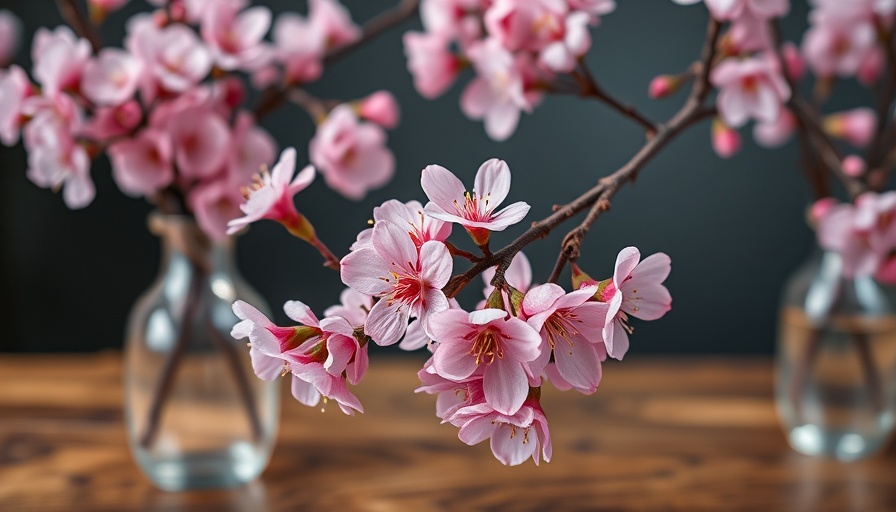
Unlock Nature's Beauty: The Art of Choosing Flowering Branches
When it comes to flower arrangements, many gardening enthusiasts often overlook the hidden gems: flowering branches. These woody stems are not just for show; they imbue your floral displays with rich textures and dynamic lines that can transform any space. With the right techniques, even the smallest backyard can burst with vibrant life, offering a delightful experience to both hobbyists and those simply looking to bring a touch of nature indoors.
Top Flowering Branches for Stunning Arrangements
Here, we spotlight some fantastic flowering branches that are both accessible and easy to care for. If you have a garden or even just a neighborhood park, you might find these beauties growing nearby:
-
Cherry (Prunus spp.)
Mature size: 15-25 ft. tall
Bloom time: February to May
Flower Colour: Pink, white -
Hawthorn (Crataegus)
Mature size: 15-50 ft. tall
Bloom time: Spring
Flower Colour: Pink, white, or red -
Crabapple
Mature size: 10-30 ft. tall
Bloom time: Early Spring
Flower Colour: Pink, white -
Flowering Quince
Mature size: 3-10 ft. tall
Bloom time: Spring
Flower Colour: Pink, red, white -
Pussywillow
Mature size: 15-25 ft. tall
Bloom time: Early Spring
Flower Colour: Yellow-green
These branches can be cut while still in bud form and lovingly brought into your home. A simple cutting from a cherry or hawthorn tree allows you to force them to bloom indoors, providing a burst of color during the colder months.
General Growing Tips for Flowering Shrubs
Understanding how to cultivate flowering branches goes beyond just cutting. To foster a thriving selection in your garden:
- Sunlight: Ensure plants receive adequate morning sun.
- Soil: Use well-drained soil enriched with organic matter.
- Water: Regular watering is essential, especially in dry spells.
These practices can help your flowering branches flourish, leading to vibrant blooms and healthy growth.
Maximize Your Arrangement's Vase Life
To make the most of your fresh cut flowers, it’s crucial to focus on vase life. Here are some tips to enhance the longevity of your arrangements:
- Cutting Technique: Make a fresh cut at an angle before placing them in water. This increases water absorption.
- Water Quality: Use clean, fresh water and change it regularly to prevent bacterial growth.
- Nutrients: Consider adding flower food to the water, which contains the right mix of nutrients.
By applying these practices, you can enjoy your beautiful arrangements for more extended periods.
Spring's Seasonal Variety: A Personal Touch
As spring blossoms around us, the experience of harvesting and arranging flowering branches becomes a heartwarming ritual. Taking a stroll in the neighborhood or tending to your garden allows you to connect with nature, discovering flowers that have personal significance. Incorporating them into your home decor not only beautifies your space but fosters a deeper appreciation of your surroundings.
Practical Insights: Start Today!
So why not take a closer look at your local flora? Identify a few of the flowering branches listed above, and consider incorporating them into your next arrangement. With a little planning, you can bring your garden's beauty indoors!
Call to Action
If you've never considered flowering branches for your arrangements, now's the perfect time to explore this rewarding aspect of gardening. Experiment with different varieties, unleash your creativity, and watch how these natural elements can brighten your home. Dive into the world of garden creations and discover the magic of DIY arrangements!
 Add Row
Add Row  Add
Add 




Write A Comment